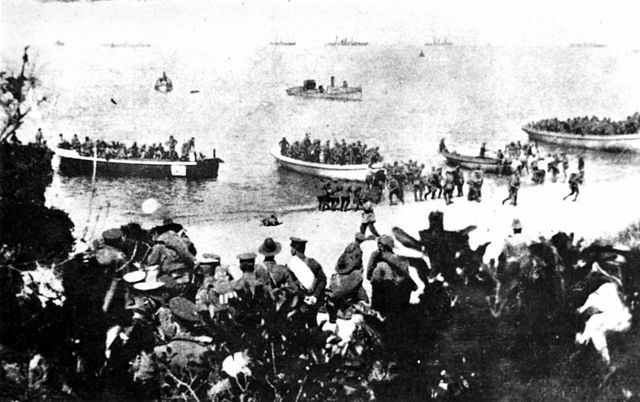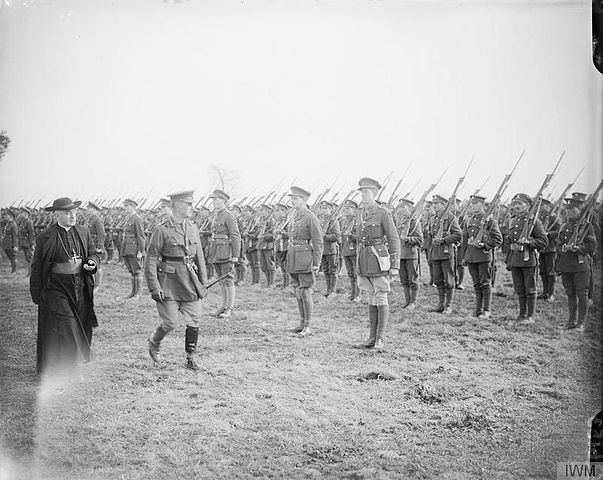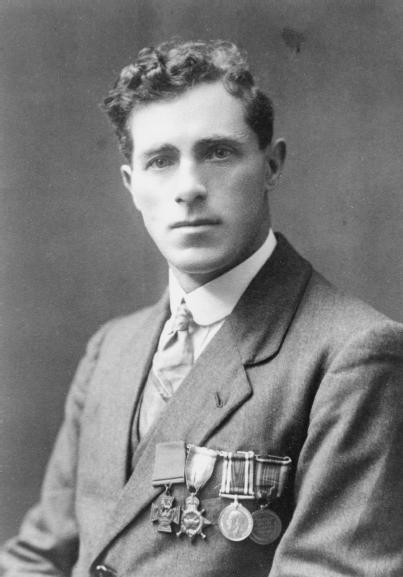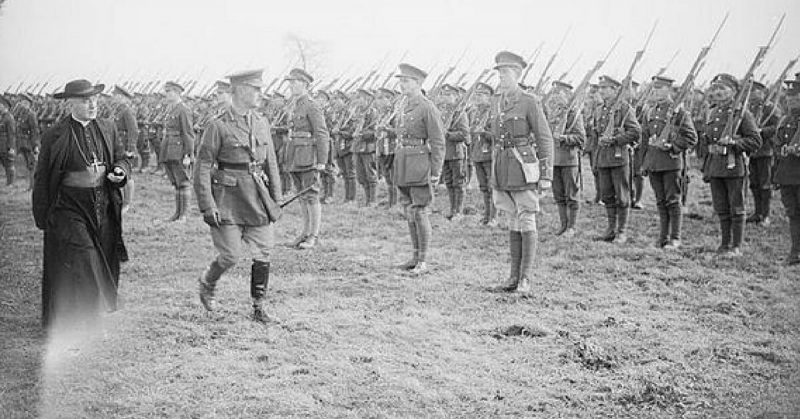Horace Augustus Curtis wasn’t supposed to be a war hero. He was supposed to be a nobody who lived and died in relative poverty in Cornwall.
Curtis’s father died when he was just four years old, and the 1901 census called his mother a pauper. But then the Great War came, and Horace was swept along on its coattails, seeing action in Gallipoli, Greece, Palestine, and France.
After the wave of nationalist pride following the declaration of war in August 1914, Curtis enlisted in the Duke of Cornwall’s Light Infantry (DCLI).
Within days of taking the King’s Shilling, Curtis was sent from the DCLI into the welcoming arms of the 7th Battalion of the Royal Dublin Fusiliers to undergo training in County Kildare, Ireland.
Recruiting in Ireland was not going as well as it was across the sea. As a result of this, Lord Kitchener decided to transfer recruits from England to fill vacant positions on the Emerald Isle.
After finishing their basic training, the unit moved to Dublin and then to Basingstoke where they underwent intensive training for the next three months. During that time they were inspected by both King George V and Kitchener – who were pleased with what they saw.
Curtis’s first action would be brutal. It would be bloody, and it would have almost certainly sapped the moral of the men fighting with the 7th.

The Royal Dublin Fusiliers arrived at Suvla Bay in Gallipoli on the 7th of August, 1915. The 7th Battalion entered the action later than other units from the same division – but this didn’t save them from the same grisly fate.
Suvla Bay has become known for massive incompetence by the British commanding officer Lieutenant-General Sir Frederick Stopford, who was dismissed from his post following the failure. There were 21,000 casualties as a result of the confusion and poor leadership.
Estimates of deaths sustained by the 10th Division vary from 75% of the original strength to 25% – or 3,000 men. But somehow Curtis was not among them – and his role in the whole conflict was far from over.
The survivors of Gallipoli were then sent on to Macedonia in September 1915. Curtis would have seen action during the Battle of Kosturino, which was fought for six days between the sixth and 12th of December, 1915.
During the conflict of Kosturino, Bulgarian troops managed to force the total withdrawal of Allied forces from Serbia – which allowed the Axis powers to construct the railway line stretching from Berlin to Constantinople.
But despite this setback for the British Army, the time spent fighting in Macedonia would prove to be of great personal success for Curtis. Not only was the soldier promoted from Lance Corporal to full Sergeant, but he was also mentioned in dispatches on the 21st of July 1917.
The 10th Division took an extremely long and winding route before they reached the European theatre of war again. After their stay in the Mediterranean, they were transferred to Alexandria in Egypt in September 1917 in order to fight the Ottomans in Palestine.

Curtis would remain there for a further eight months, honing his craft and getting used to his new leadership role before April 1918, when the 6th Battalion of the Royal Munster Fusiliers and the 7th left their units in order to return to France to stop the German advance.
The 7th landed in the French town of Marseilles on the 31st of May and were absorbed by the 2nd Battalion Royal Dublin Fusiliers after being broken down into a Cadre. This would be the fourth theatre of war in which Curtis had fought, but mother nature would strike him down before long.
After being in France for just over a month, Curtis was forced into the Bermondsey Military Hospital in London after contracting malaria. He stayed there for four days before returning home between the 24th of July and the 3rd of August – it was the first time Curtis had seen home for four years.
On the 19th of August, he was cleared to return back to action and was at the front on the 21st of September.
Time was now getting perilously close to Armistice Day, but the soldiers on the front were not to know that. In fact, Curtis won his Victoria Cross just two months before peace would settle over Europe for another generation.
The action in which Curtis would perform heroics and be forever remembered in the military history of the British Army would take place near Le Cateau, the place in which the Germans had inflicted a decisive defeat on the Allies just months earlier.
It was the morning, and the platoon that Curtis was in had just come under heavy machine gun fire. The Sergeant immediately realised the danger to his own troops and the whole action and didn’t think twice before rushing headlong to engage the enemy.

Not only did Curtis have to get through withering German fire, but he also had to survive the British barrage of fire. He single-handedly killed or wounded the crews of two machine guns.
As a result of this, four more guns surrendered and Curtis casually captured over 100 enemy soldiers before his brothers in arms could reach him.
The citation in the London Gazette on the 6th of January 1919 read: “For most conspicuous bravery and devotion to duty East of Le Cateau on the morning of 18th October 1918, when in the attack his platoon came unexpectedly under intense machine-gun fire.
“Realising that the attack would fail unless the enemy guns were silenced, Sjt Curtis, without hesitation, rushed forward through our own barrage and the enemy fire and killed and wounded the teams of two of the guns, whereupon the remaining four guns surrendered.
“Then turning his attention to a train-load of reinforcements, he succeeded in capturing over 100 enemy before his comrades joined him. His valour and disregard of danger inspired all.”
Unlike some winners of the Victoria Cross, Curtis survived the way and was discharged from active service on the 31st of March 1920. After that, however, he swiftly signed up for the 5th Territorial Battalion DCLI for three years and was promoted to Sergeant.
According to a family source, Curtis rarely mentioned what he went through in the war. The hero died on the 1st of July, 1968.
